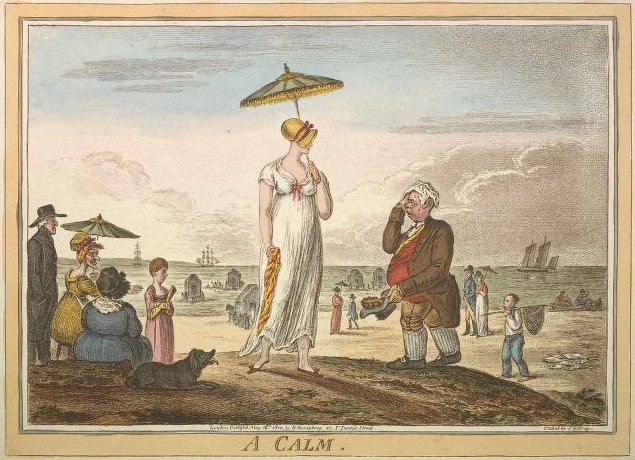
Ah, summer! The warm months invite a variety of activities best enjoyed outside such as hiking, fishing, water sports, and swimming to name a few. I love to swim, and so do some of the heroines in my Regency romance novels. And since many readers report that reading about the fun and beautiful clothing characters wear is one of the reasons they read historical novels, this begs the question: what did ladies in Regency England wear when they swam or visited the beach?
Historical Swimsuits
Swimsuits, or bathing costumes, have evolved over the years. Even the concept of what to wear while swimming has changed. However, having special clothing for such a delightful activity is a relatively new concept.
So back to the question: what did Regency-era people wear while swimming?
The short answer is: anything they wanted. Even nothing, if they so desired. Are you scandalized?
Ladies would not–or would they?
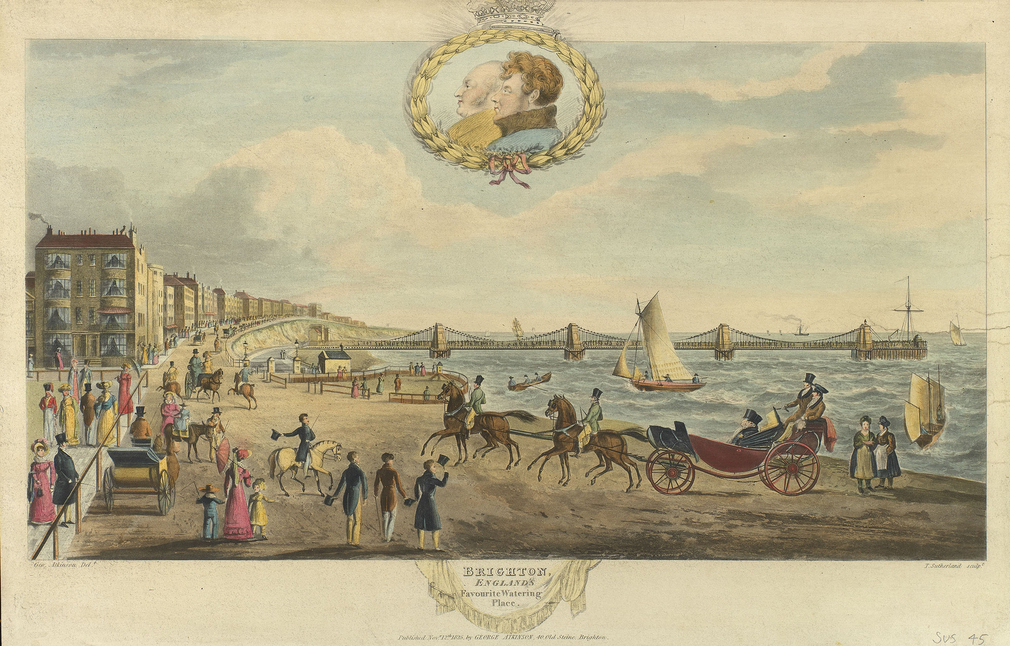
Before I go into clothing, I should point out that some historians claim that until the last hundred years or so, women in general, and ladies in particular, didn’t know how to swim; it was considered unladylike.
I agree it’s unlikely the average lady in Regency England swam in lakes, rivers, or the ocean because the water was probably extremely cold. For much of that era, Europe experienced a mini Ice Age. Also, wet clothing is bulky and can get tangled in limbs, not to mention a lot of cloth becomes practically transparent, so swimming was probably frowned upon for safety and modesty reasons.
However, kids weren’t all that different then than now. Show me a kid who won’t play in water even if the weather is chilly and I’ll be shocked. Like most children, I have always loved to swim, cold water or modesty or not, so I assume plenty of girls in Regency England, even daughters of gentlemen, grew up swimming or at least playing in the water. Surely most of them had someone who could teach them to swim if they so desired because, really, nothing is as refreshing as cold water on a sunny day. And I have evidence to back up that theory; period drawings.
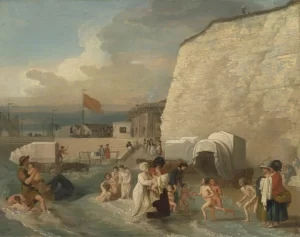
Bathing suits or the lack thereof
None of my historical fashion books mention clothing worn while bathing or swimming until the late Victorian Era, At that time, sea bathing attire became fashionable at seaside resorts. But during the Regency, nothing was quite so standardized.
Swimming in the nude, at least in non-public places, seems to have been the norm–especially for men and children. Ladies, however, seemed to wear whatever they wanted (or whatever their mothers dictated).
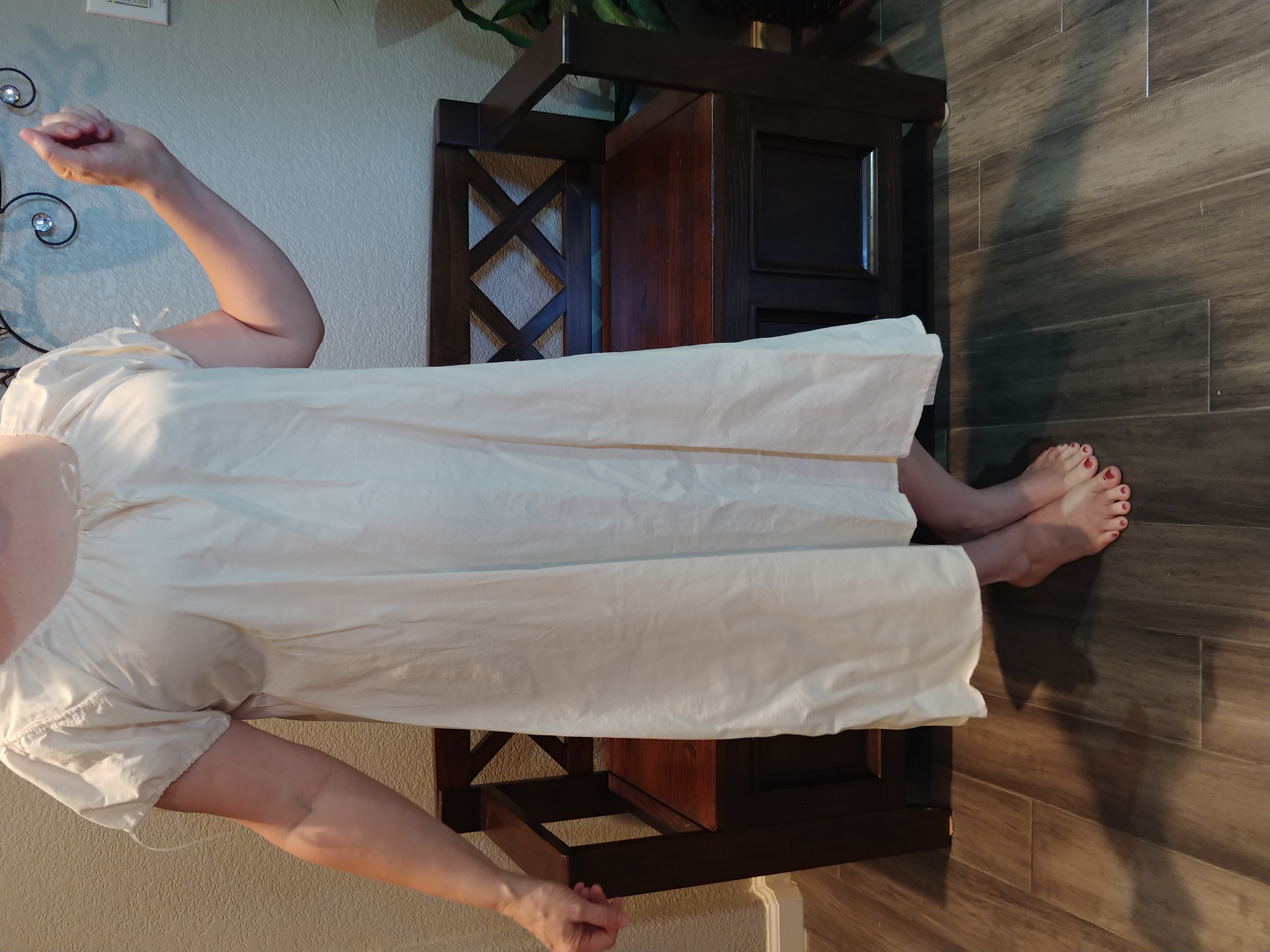
Women generally either swam naked or wore a shift, (pictured to the right) which is the undermost layer of clothing, made out of muslin. One source mentioned women wearing a long flannel shift while bathing, but I have never heard of a shift made of flannel–only petticoats, which are different. It’s possible some wore a shift especially made of flannel for playing in the water.
If you’re thinking, “dresses float up,” you are right. To combat that, women sometimes wore shifts or gowns with lead weights sewn into the hem to keep them in place. This seems to be most common in Bath while bathing in the Roman baths for health reasons where men and women often all bathed together in the same pool. (more about Bath here.)

Resort Towns
In Brighton, a fashionable seaside resort, the genders often swam separately, most often at different beaches so modesty would have been less of a concern.
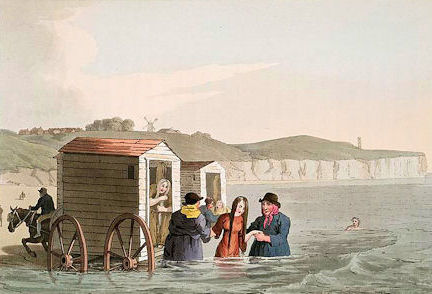
Often, men, women, and children all frolicked in the water together, as seen in the image above left labeled Seaside resort.
Bathing Machines
Ladies who could not swim or wished to do so with a measure of privacy used bathing machines — small closed carts pulled by a horse into the ocean until the water level roughly matched the floor of the changing room. Inside, the bather undressed or changed, then stepped down the stairs into the water.
Although I expect it was less common, men used these bathing machines as well, also aided by a bathing attendant. Female attendants were called dippers and male attendants were dunkers.
By the 1890s, bathing machines stopped being the means of getting into the water and instead became stationary changing rooms.
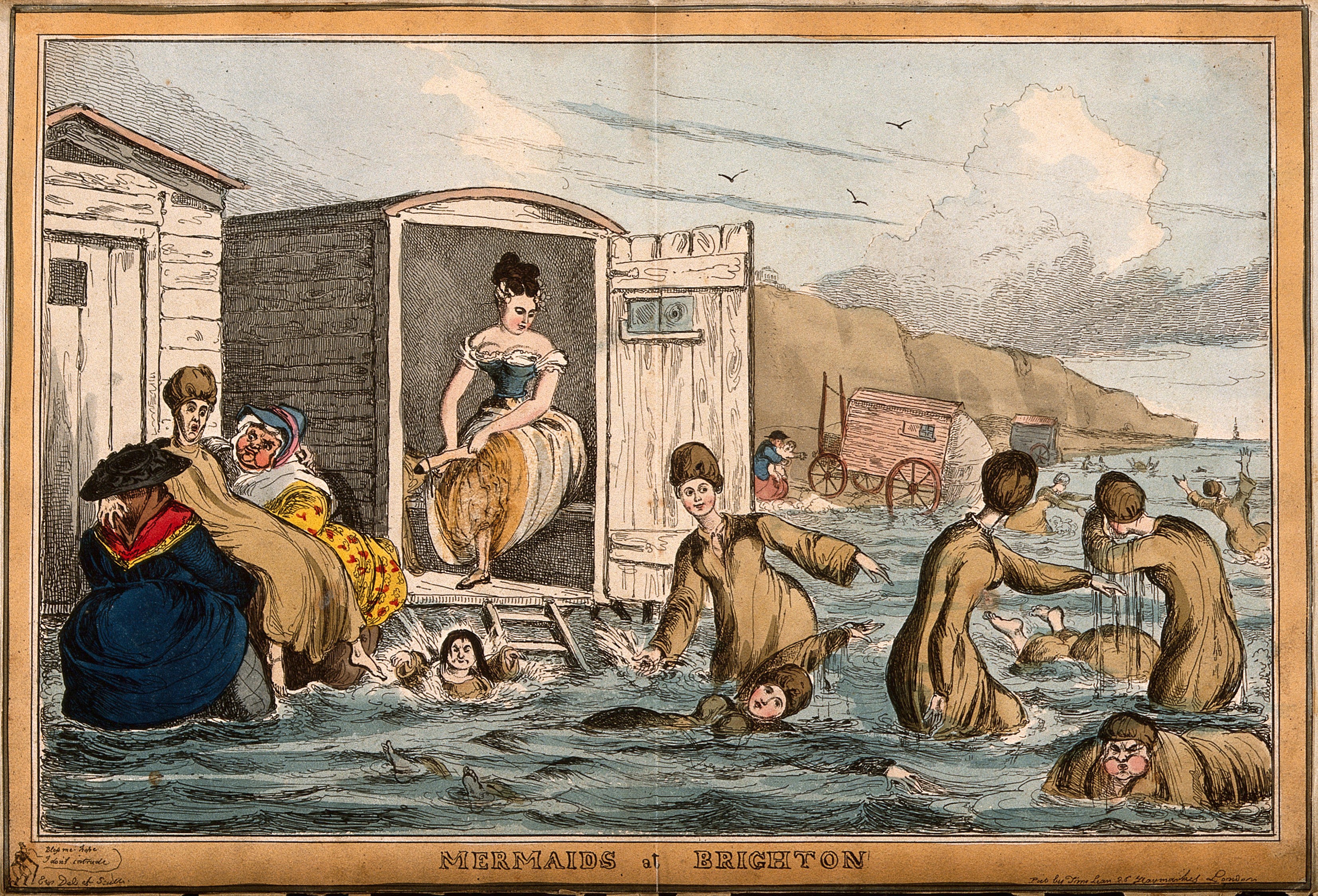 Bathing attendants
Bathing attendants
Pictured to the right above, bathing attendants wearing dark blue woolen gowns, probably weighted, help a fragile creature into the water. Attendants ensured the bather dunked herself or himself into the saltwater, believed to be healing, or ensured they didn’t drown. Or both.
The image to the left show a variety of confidence in the bathers. They all appear to be wearing long-sleeved gowns which had the added benefit of protecting skin from sunburn as well as an increased measure of modesty. Whether the gowns in this image are all brown because that was fashionable or because the artist chose to make them all the same color, is open for discussion. I find it interesting that the dippers in both images are wearing dark blue but no one else is. Make of that what you will.
Mermaids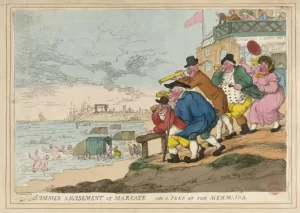
Plenty of drawings, such as the one below to the right show men peeping at bathers or “mermaids,” some who are wearing nothing and others wearing their revealing wet shifts. I love the addition of the woman in pink about to bash her man over the head for peeking at other women. Serves him right!
Proper swimwear?
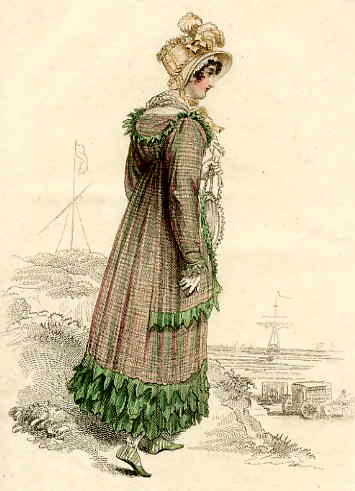
Several costumes in both La Belle Assemble and Acknerman’s repository (famous fashion magazines of the time) feature ensembles labeled Seaside Dress or Bathing Dress. Make no mistake, they were not dresses meant to be worn while swimming in the water; they were walking gowns or morning gowns worn while walking to and from bathing machines or to promenade fashionably along the beach. The only mention of an ensemble made for swimming mentions a corset that is easy to into and out of without help. But that’s nothing new. Short stays served that purpose, as well.
Real proper swimwear

No ensembles for swimming or sea bathing appear in fashion prints until the mid to late Victorian Era, probably due to the Victorian sensibility of modesty. At that point, many resorts banned naked swimming and enforced the wearing of proper swimwear.
Historical Bathing Costumes
Though these designs date after the Regency Era, I thought they were fun and wanted to share them.
To the right is an image of early Victorian swimwear labeled bathing dresses and hats from 1870. I believe the nearly transparent women’s faces are not meant to be ghostly but rather a bleed-through of illustrations on the other side of the page. Note the dark colors and clearly thick fabrics. Both have pantaloons and some kind of overskirt. One shows short sleeves and the other has long sleeves. Clearly, these are meant to be worn with a corset, although I cannot imagine trying to swim in a corset! I’d think the thick dresses would make swimming difficult enough.
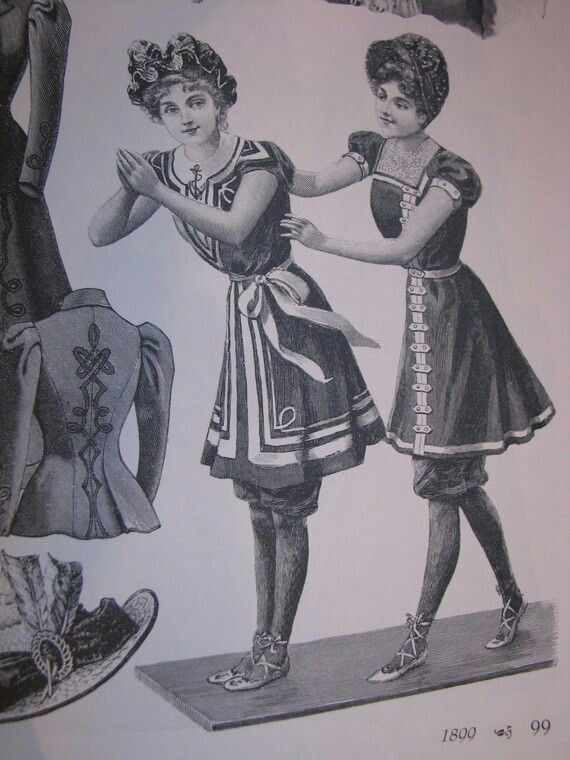
To the left is an advertisement of two Edwardian ladies modeling period bathing suits, dated 1899. Their sleeves are short and the fabrics appear to be lighter weight. They also seem to have corsetted waists, or maybe that’s just the artist’s rendering. I like the hats in both images and enjoy seeing their evolution.
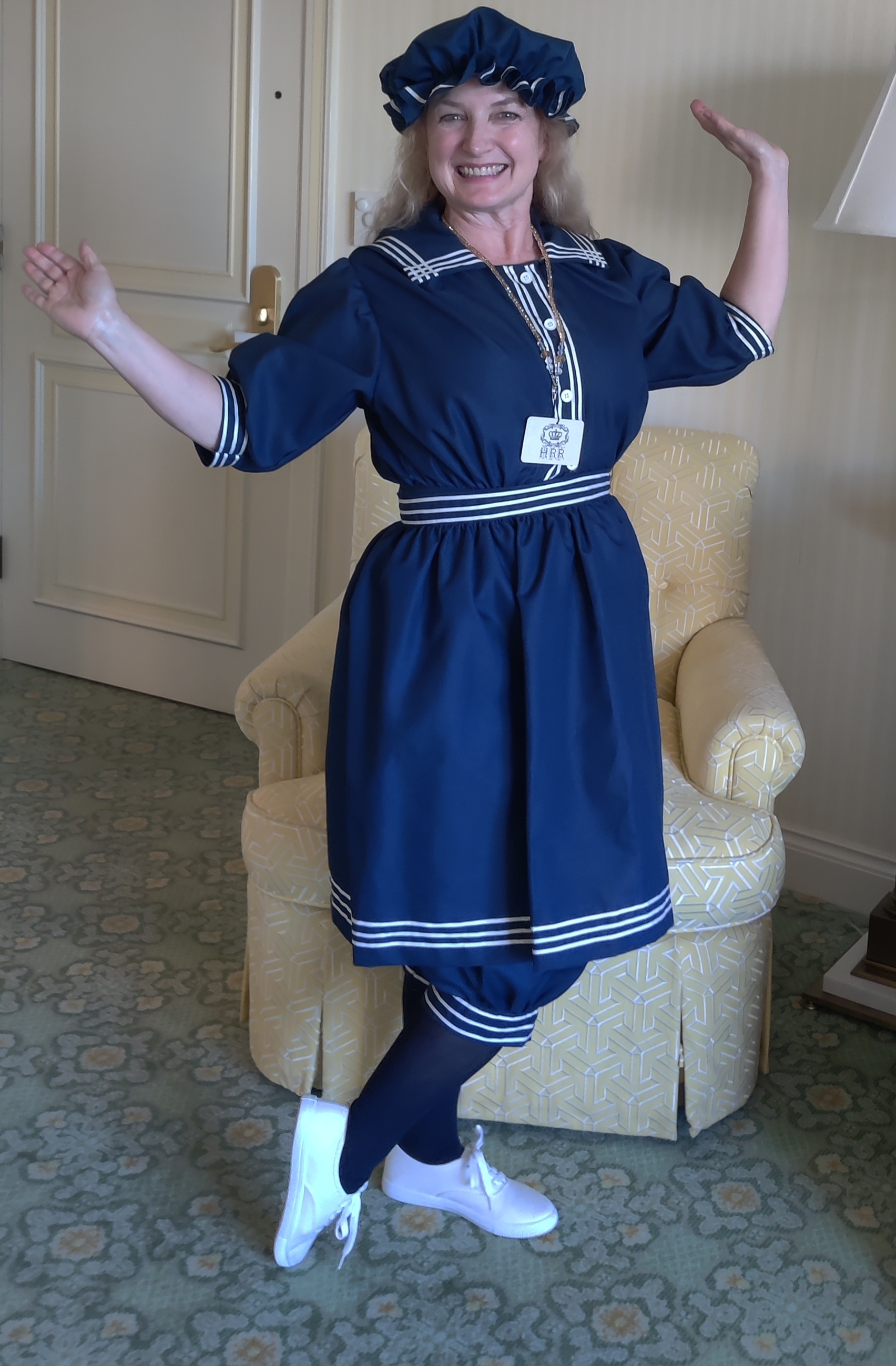
To the right is a photo of some weird chick (who, me?) wearing a proper bathing costume from approximately 1910. Note the dark blue thick fabric and modest design which includes, pantaloons, and skirt, similar to the 1899 image. I am not, however wearing a corset!
The hat, dark stockings, and white shoes are period appropriate for that era but I’m sure ladies removed them before going into the water. I wasn’t brave enough to test out how well I could swim while wearing all of these layers–mostly because I borrowed the costume and didn’t want to risk it fading in the chlorinated pool water of our hotel.
Which costume is your favorite?
Sources:
Sue Berry Historian, Sea Bathing in Brighton
the Jane Austen Centre, The Georgian Practice of Sea Bathing
Jane Austen’s World, Regency Sea Bathing
Jane Austen’s London; Mrs. Bell
All Things Georgian, Regency Swimwear
Fashion History Timeline, A History of Women’s Swimwear
Word Wenches: Keeping It Clean

Can you imagine what they’d think of today’s swimwear?! Sure, they swam with nothing on, but not in mixed company lol. I love the picture of the lady about to swat her man! I love swimming, so I’m glad we still have some modest options…though they wouldn’t be modest to other eras. They probably had less cases of skin cancer, but that’s a study you can do later lol. I like the 1899 swimwear option. The fit sort of reminds me of dresses from the 50s.
What a fun frolic in the waters! Thank you for sharing this with us!